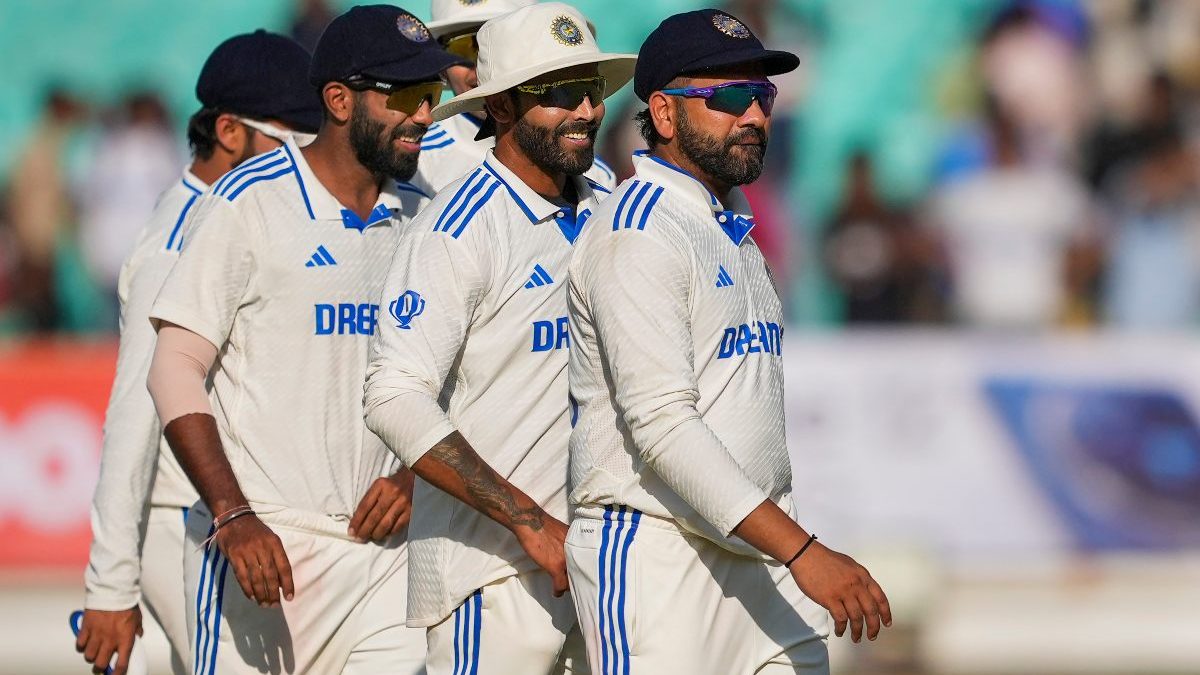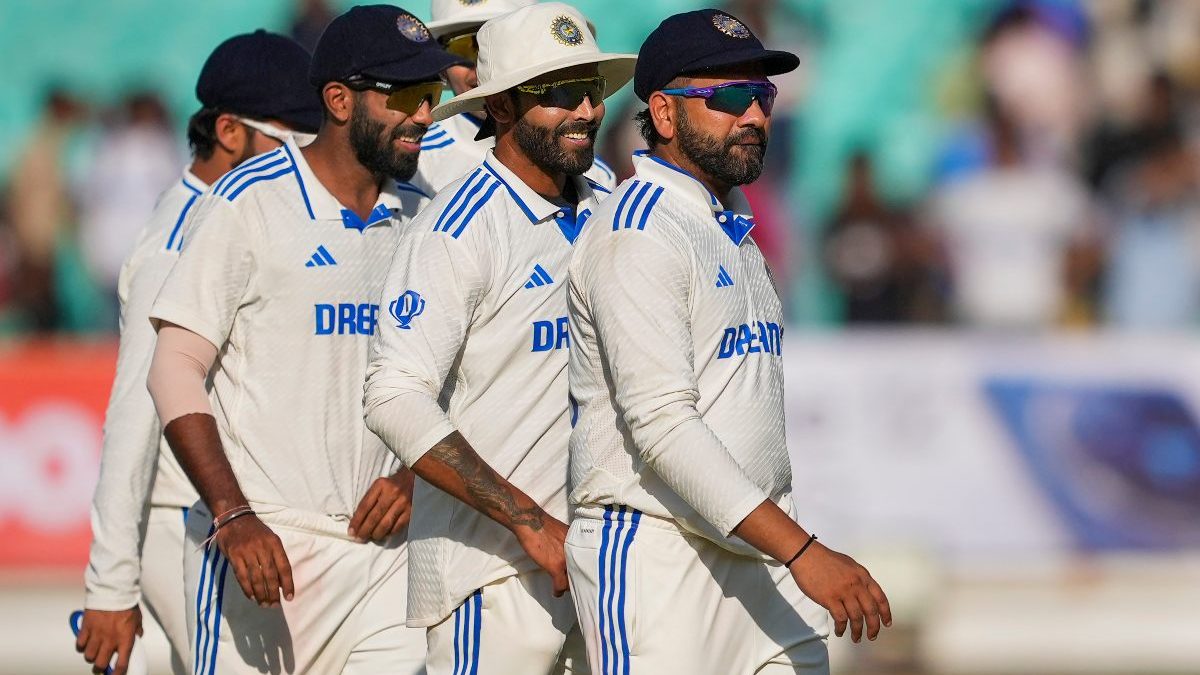Sir Richard Hadlee once said he thought of an over as a revolver loaded with six bullets.
For a bowler to work the six-strike plan though, the batsman has to be standing still. It’s a hard thought to adjust to in this age of hyper-gratification, but that is why the single still remains the most crucial scoring option in cricket. When you are getting them with ease and frequency, everything else falls into place. And when you are not, not.
The drying up of singles did Australia in today, forcing batsmen to remain in the gunsight of the bowler for long periods of time, and allowing bowlers to work to bowling plans that push and pull at batting mechanics, eroding muscle memory and opening up chinks to exploit.
Australia won the toss in India for the seventh straight time, opted to bat on a pitch expected to turn from ball one, and for the best part of two hours the openers David Warner and Matt Renshaw did everything right.
The hyper-aggressive Warner rang in a changeling, a version of himself prepared to graft and grind and wait patiently for opportunities to cash in, while the 20-year-old tyro Renshaw played with the composure of a veteran.
Everything England did wrong in the recent series, the Aussie openers got right. Where the English batsmen got their front foot across and ended up playing around their pad, the Aussie openers’ front press was straight down the track, bat meeting ball well in front of pad, hands soft and loose and relaxed. Where the Brits went into siege mode when the turning ball beat their push, the Aussies – Renshaw in particular – smiled toothpaste-ad smiles and settled to face the next ball.
With Ishant Sharma taking bits of turf off in his follow through in the very first over and Ravichandran Ashwin sharing the new ball and ripping a couple past the bat, you looked for a repeat of recent routs. Instead you got a passage of play lasting an hour and 45 minutes that threatened to upend the narrative, as Warner and Renshaw stitched together an 82-run stand across 27.2 overs, punctuated by 10 fours and a six when Ravindra Jadeja gave Renshaw just enough air to shimmy down and extend his arms.
But, those singles. Just 24 of them, less than a single per over, while the 129 dot balls by the two openers testified to the length of time each spent in the sights of a particular bowler.
Spin accounted for Warner, but only indirectly. He had played so much of it, consciously slowing his bat speed down and playing late, that when Umesh Yadav came on (as the fifth bowler to be tried), Warner didn’t readjust fast enough. It was a fairly standard delivery – good length, tight line; Warner was just a fraction late getting his bat down to it on the drive, and ended up edging onto the stumps (38 off 77 with six fours).
Australian captain Steve Smith walked in and saw his partner rushing off, apparently in need of an urgent bio-break. And just like that, a position of comfort suddenly became fraught, with two new batsmen at the crease.
Before lunch, Smith and Peter Handscomb played out 30 deliveries before getting off the mark. And after the break Smith and Marsh slipped further into a rut, partly of their own making and partly the result of remarkably disciplined bowling. As with the opening pair, numbers three and four spent too long rooted to their respective ends. Against Jadeja, Marsh was runless for 14 of 16 balls faced and against Umesh, for 12 of 15 balls; Smith similarly couldn’t get out of jail for 12 of 15 balls from Ishant and 33 of 44 balls he faced from Jadeja.
Cue cliché – “something had to give”. A flat nothing ball from Jayant Yadav angling to leg was met by Marsh with too vehement a sweep; he played all over the ball, saw it hit pad, then glove, then back of the bat for Kohli to hold at leg slip. In one of cricket’s little by-plays, Kohli had noticed Marsh’s edginess and brought himself into that position just a couple of balls previously. (Marsh 16 off 55 with three fours – and just four singles).
Handscomb, at least in comparison with the others, looked to be busy, collecting eight singles and three fours in a 45-ball stay for 22. Jadeja wheeled out his patented mode of dismissal, beating the bat with bounce and ripping turn and immediately following up with the straight, flat, fast skidding delivery to nail the batsman in front.
Four balls later, Smith had a brain fade – he skipped down the wicket to Ashwin, flicked at the ball looking to pierce the on, and chipped it to Kohli, now at mid-wicket. If this innings had a turning point, that was it – Smith, for all that he was scoring slow, looked at home out there, moving easily, reading the lines and lengths well, and looking at home on his homeground-away-from-home. (22 off 45, three fours).
It became fairly clinical from that point on. Having practised on Handscomb, Jadeja perfected the lbw ball against Mitchell Marsh (4 off 18), and Ashwin produced the ball of the day against the impressive Renshaw – a delivery that landed in line with off, forced the batsman into the defensive push, then turned away to pull Renshaw out of shape and took the edge to second slip (68 off 156).
At the other end, Umesh was dealing body blows to the “turning track” narrative. First, with a short ball wide of off that drew Stephen O’Keefe into the slashing cut. Wriddhiman Saha, late into a stellar day with the gloves, took off on a flight plan that carried him behind first slip’s back to snaffle as brilliant a catch as an Indian ‘keeper has taken off a quick. And off the very next ball, Umesh straightened the line and got the length fuller to nail Nathan Lyon in front, the batsman’s appeal to DRS only serving to incriminate him further.
A game of twists and turns took one last twist – and the dodgy track narrative took a knockout punch – when Mitchell Starc decided to play the ball and not the pitch. While the strokeless but obdurate Josh Hazelwood held his end up, Starc took on spin and pace, defending with ease when he felt the need, smiting with vigour when he saw the chance. Fifteen runs off just six balls against the hitherto unplayable Jadeja including two sweetly struck fours and a pulverising six, 11 in 11 balls off Umesh, 13 in 21 off off Ashwin, 10 in 13 off Ishant, eight in seven off Jayant – pace and spin, old ball and new, Starc gave the bowling only as much respect as it was due and the pitch none at all.
The temptation is to put such aberrations as a 50-run last wicket partnership off 63 balls, in which one batsman (Starc) blasts 57 off 58 with five fours and three towering sixes (Hazelwood 1 off 31 at the other end) down to the tail-ender’s licence to slog. Only, this was no hit and giggle knock – Starc, who has eight Test fifties to his name and a respectable average of 24.3, sussed the pitch out perfectly, read the bowlers out of the hand, and forced them off their preferred lines and lengths to haul Australia back into the game.
He also raised the obvious what-if – what if the higher-ranked Australian batsmen, having the advantage of batting first on a track that can only get tougher, had not allowed the hype about the wicket to get in their heads, particularly after the platform the opening partnership had built?
On the sort of track where you want to bat big if you are lucky to bat first, Australia missed the opportunity. And while 256 (plus whatever the last pair adds on Friday morning) looks decent enough for a day’s toil in unfamiliar conditions, on balance you would give the first day to India, thanks largely to an impressive Umesh and the reliable Jadeja.
There’s runs in this track if you know how to get them. There’s pace and bounce in this wicket, and swing with the SG ball, if you know how to bowl here. And there is, to state the blindingly obvious, turn and bounce for spinners who know their craft. It has the makings of a cracking contest – if we can look past the simplistic ‘dust bowl’ narrative.
This article was first published on Prem Panicker’s blog page .


)




)
)
)
)
)
)
)
)